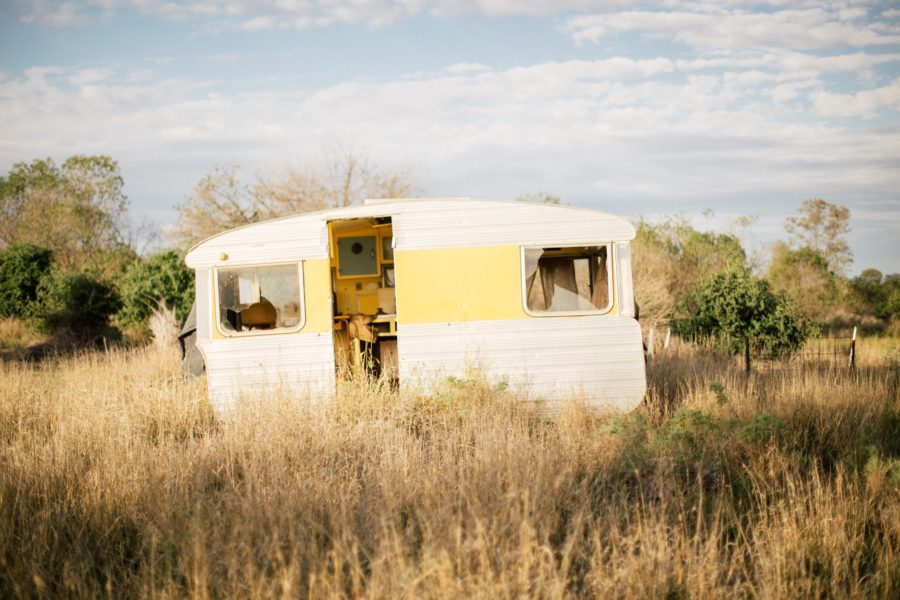
What is Boondocking?
This past July I went on a boondocking road trip for just short of a month. I quickly learned the ins and outs of boondocking in all its glory. While the idea might seem odd to you at first, I would prefer boondocking to staying in a groomed RV park 9/10 times because it gives you privacy and an up-close relationship with nature. You can park in the shadow of a mountain, along a river or a cliff. I’d take that over the sound of my neighbor’s TV – 15 feet away – any day. Anyways, this is a compilation of what I’ve learned, mostly the hard way.
So what is Boondocking?
Simply put, boondocking is like dry camping (camping without any hookups) in the middle of nowhere. You park your rig, level it if you want, and you’re done; no sewage tubes, electrical boxes and hose connections. A lot of times it feels like you’re just pulling off the road, parking, and you’re home; because you are. Some spots are way down a long windy road, others are little dirt patches right off the main highway. Every spot is different and offers a unique view.
Water
Now before you think dry camping actually means without water, it just means that you’re limited to the water you can hold in your tank. This means you have to fill up every once in a while, but most boondocking spots have a 14-day limit anyway. However, be conscious of your water use when trying to stay for more than a week or so. Take quick showers and wash dishes efficiently. When it comes to sewage, it’s the reverse. Once your tanks are full, you must find somewhere to dump (preferably before they’re actually full).
Power
Power is something we use sparingly as well. We power the larger items like AC or the microwave with a generator. Otherwise smaller items like lights will run off the battery. To save money, we typically ran the generator for about 30 mins in the morning to make food and cool down the trailer (it will stay relatively cool for a while once you turn it off) and for about an hour in the evening to do the same thing.
This time is also the time for charging the millions of batteries we bring for camera equipment, laptops, phones etc…The refrigerator is run by propane so we don’t have to worry about food going bad. However, make sure everything is working properly because one mistake can ruin your week’s supply of food. This is why we rely mostly on rice, beans, canned fruits and veggies, and the occasional cup of noodles. Having food with you that won’t spoil is essential.

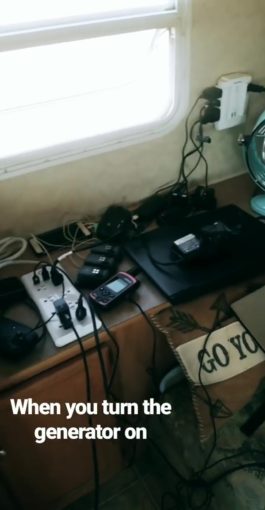
Where can you Boondock?
Before you go get yourself in trouble for sleeping on the side of some main highway, there are designated areas where you can or can’t boondock (keep in mind several cities have ordinances against overnight parking). Typically areas are on public land controlled by the Bureau of Land Management, but that doesn’t mean you can just park on any BLM land, there’s designated areas. National Forests are my personal favorite, there’s usually tons of great secluded spots.
BLM
The best way to find what specific places you can stay is referencing two websites: Campendium and FreeCampsites. Between the two you can find locations nearby where there is free camping. The biggest thing to check before you set out are the reviews. A lot of these places will have very rough roads and huge potholes and ditches. So, before you head down there with your fancy Class A RV, check the road conditions.
The reviews will tell you about the campsites in general as well such as how noisy the surrounding area is, how crowded the spot is during different times of the year (don’t be afraid to make friends on the road because fellow boondockers are usually nice and full of great stories and advice), what features are nearby (lakes, rivers, waterfalls etc…), and if they encountered any trouble you should look out for.
The locations will usually be GPS coordinates, so pop them in Google Maps on satellite view to find what the campground looks like ahead of time; sometimes the locations are a little bit off and you have to find a clearing nearby. It also helps when you’re pulling in late at night to know what you’re looking for.


Walmart
One of the best campsites is Walmart. When you’re campsite is a bust, or you can’t find it in the dark, even in the most remote locations I’ve never seemed to be far from a Walmart. Keep in mind that each Walmart has its own policy and it’s courteous to ask a manager inside before setting up for the night. However, out of the tons of Walmarts I’ve stayed at, I’ve only been asked to leave once (but the man kindly directed us to a place down the road where we could stay).
Etiquette
Now, there’s a lot of debate on Walmart etiquette; whether to put your slides out, whether to run your generator, where to park. As a general rule of thumb, just be courteous. Managers will usually tell you whether their specific Walmart has a designated space for RVs, if not I always park on the outward edges and take up as few spaces as possible. If we’re far away from others, I usually don’t feel bad for running the generator, but if we’re parked right next to another rig then we only turn it on if necessary and for a short time.
When it comes to slides or pop outs, as long as your not taking up needed space, I don’t think you’ll have a problem with it. Of course, Walmart prefers that you leave in the morning and don’t just hang around till noon, so there’s no point if you’re just stopping to sleep for a few hours. However, I’ve put the slides out almost every time to access something like food and have never had an issue.
Finally, some people will say that if you’re staying at a Walmart you should be sure to buy something inside. While I agree with this as a nice gesture, most times – if you don’t call or talk to a manager ahead of time – they will never really recognize that you’re there. So, it’s not imperative, but I’ve always done it unintentionally. Pro Tip: most Walmarts sell these palm-sized freshly made pies and cakes for 50 cents each. Almost every time I’ve stayed at a Walmart, I ran inside to get the salted caramel cake and some vanilla ice cream (warm the cake up for 30 seconds in the microwave to really treat yourself).
You can access a list of Walmarts to see reviews on their general overnight parking policies. This Walmart Locator is helpful for determining which ones usually allow parking. However, the input is based on reviews and different managers may have different opinions – if it’s not a city ordinance – so I’d call ahead anyway if you’re really hoping to park there. AllStays is another great tool for finding Walmarts.


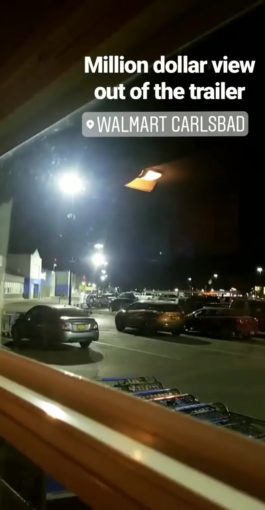
Best Boondocking Tips:
A lot of times you will have neighbors, be nice, say hi. But also be courteous if you’re planning on running your generator at night to give them some distance.
Watch for rivers, they can be a beautiful backdrop but if you park too close you may have to wake up in the middle of the night to move your trailer cause the waters are rising too fast (mud can also cause your trailer to sink or slide as well)
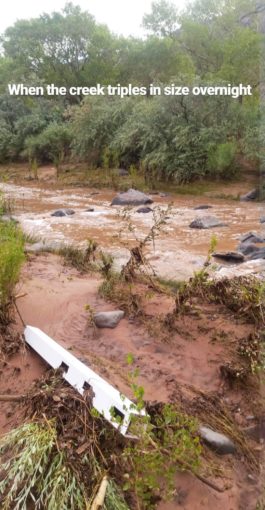
Use the app GasBuddy when on the road because there are stretches of over 100 miles in certain places without any gas stations. It uses reviews to list the locations and prices of gas stations near you; great for finding the cheapest option as well.
You’ll often find yourself far from roadside assistance; be prepared.

National Parks allow you to fill up on water for free (once you pay to enter the park), another great perk of having an America The Beautiful Pass. Note: parks without campgrounds won’t have water spigots.
National Parks also allow you to dump either for cheap or for free, depending on where you are. Usually, the cost is $5.
If it’s cold, cooking on a gas stove will heat your rig faster than anything else, plus you get to enjoy some warm food.
Washing plastic plates, bowls and utensils will save money.
Plan showers for after a hot hike so you don’t use up propane heating the water.
Make a copy of your trailer key, before you go kayaking in a storm. Preferably, however, make a copy before you leave in the first place.
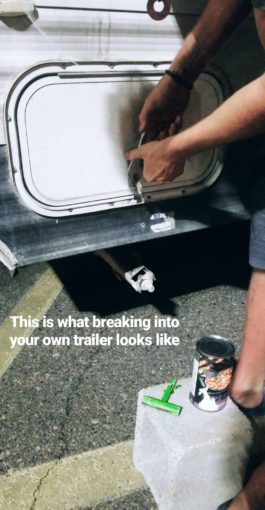
For similar posts check out:

2 thoughts